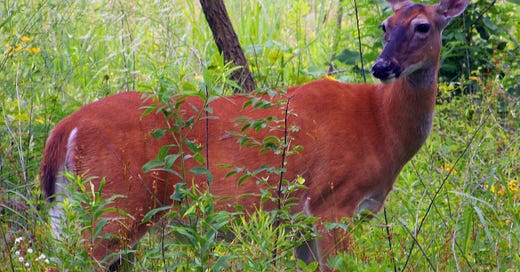Wisdom From A Professional Hunting Guide
The reality of field marksmanship as told by a hunting guide.
Wisdom From A Professional Hunting Guide
How relevant is organized range training to the hunting field? Can shooting matches and classes really help you become a better hunter? A retired professional big game hunting guide sent the following to me.
“I was never a famous name guide, but facts are facts and this is what I experienced. I am extremely interested in the idea that hunters should have to “qualify” to get a license. I realize that is anathema to many but I guided hunters professionally and was so generally disgusted by the pathetic level of marksmanship displayed by a large percentage of my clients, it was the primary reason I quit.
“You are right about the importance of organized shooting. I shoot CMP Service Rifle. I am not that great a shot, generally in the low Expert Classification (just over 90% average) but I shoot these matches for precisely the reasons you push competitive shooting events: Competition and time constraints make you do funny things, unless you know how to handle the pressure (mostly from experience) and the problems that crop up.
“I routinely invite friends, buddies, and shooting acquaintances to give matches a try. I always offer the use of a rifle and ammo and gear but have had only two people take me up on it. One was a former High Power shooter, now back into it after his feet were rewet, and the other a complete newbie.
“The old saw about ‘can’t hit a target on a range but I never miss my deer’ is pretty old and soggy in my book. I have never taken a competent shot out and had a lousy performance from them in the field. I have taken plenty of ‘good game shots’ out and had them discover that animals move and there is no bench rest handy. What can a guy say after seeing this type of thing over and over?
“I call this The Rifle Problem. An Elk guide sees the client’s rifle. If it is chambered in 270 Winchester, 30-06 Springfield, or similar: Everything will probably be okay. If the rifle is chambered in a .30 caliber Weatherby/ Ultra/Super/Magnum of any sort: Expect trouble. If it’s a .338 caliber Weatherby/ Ultra/Super/Magnum (particularly 340 Weatherby, in my experience) or bigger: Expect gross incompetence.
“How can I make such generalizations? Experience. The problem is not with those cartridges, it’s a simple issue of logistics. If your client is going to be half competent with their rifle in the field, he or she had better have put at least a few hundred rounds through it before hunting by practicing and confirming zero from realistic shooting positions, not from a bench rest. For example, 340 Weatherby ammo currently retails for about $7 per round in 20-round boxes while 30-06 Springfield can be had for about $1.50 per round in 20-round boxes and about half that if bought in bulk. Handloading closes this gap a bit but heavy magnum ammo is always much more expensive and wears out barrels faster. So, either your client’s got some bucks (and hopefully you get a big tip) or that half shot-up box of ammo he brought with him was the the first and only ammo he’s ever shot through that rifle. This means your client is almost certainly a low-skill shooter using a hard-kicking rifle with a lackluster zero. Not good.
"Even if you want to ignore ammunition cost, working on your shooting is always more difficult with more noise and recoil. Magnums appeal primarily to hunters that don’t shoot (or that don’t shoot often or well) because a genuinely good shooter putting in solid practice knows better than to put up with more power than is necessary. It’s amazing how much more expensive and punishing magnum cartridges are for such a small increase in ballistic performance.
“I always preferred guiding prairie goats because to me it was like chess. Outthink and be where they will be with your hunter set up and ready. I’d have fellows set up for a 75 to 125 yard shot and most would guess it as 200 yards or more. Never let a client shoot over 200 because you don’t have enough hours in the day to chase the cripples.”




